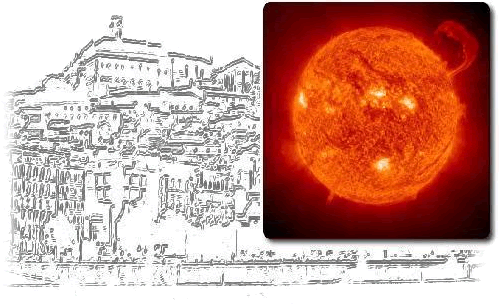|
|
|
|
|
|
|
|
|
|
|
|
|
Luís Olavo de Toledo Fernandes, Mr. - MSc |
|
Centro de Rádio Astronomia Astrofísica Mackenzie, Escola de Engenharia, Universidade Presbiteriana Mackenzie, São Paulo, SP, Brasil |
|
|
|
|
|
|
|
Session 1 - Poster |
|
Solar flare observations at 30 THz |
|
R. Miteva (Space Research and Technology Institute,
Bulgarian Academy of Sciences, Bulgaria and CRAAM/MPU, Brazil), P. Kaufmann
(CRAAM/MPU and State University of Campinas, Brazil), D. P. Cabezas (CRAAM/MPU,
Brazil), M. M. Cassiano (CRAAM/MPU, Brazil), L. O. T. Fernandes (CRAAM/MPU, Brazil),
S. L. Freeland (Lockheed Martin Solar and Astrophysics Laboratory, USA), M. Karlicky
(Astronomical Institute of the Academy of Sciences of the Czech Republic), A.
Kerdraon (LESIA-Observatoire de Paris, France), A. S. Kudaka (CRAAM/MPU, Brazil), M.
L. Luoni (Institute of Astronomy and space Physics, CONICET/UBA, Argentina), R.
Marcon (State University of Campinas and Bernard Lyot Solar Observatory Campinas,
Brazil), J.-P. Raulin (CRAAM/MPU, Brazil), G. Trottet (LESIA-Observatoire de Paris,
Meudon), S. M. White (Air Force Research Laboratories, Space Vehicles Directorate,
USA) |
|
|
|
We report the detection of an intense 30 THz impulsive burst on 1 August
2014 with the equipment installed at the Center of Radio Astronomy and Astrophysics
(CRAAM) in Mackenzie Presbyterian University (MPU), Sao Paulo, Brazil. The event is
associated with a GOES M2 class solar flare. The maximum flux at 30 THz was about
19000 sfu, almost two orders of magnitude larger than measured at microwave
frequencies. The microwave emissions at higher frequencies exhibit a suggestive time
association with the 30 THz peak. At the metric-to-decimetric frequency range a
superimposed short duration burst occurs close to the peak of the 30 THz emission
while the underlying slower emission maximum is progressively delayed for lower
frequencies. The dynamic radio spectrum shows signatures of drifting pulsations and
reversed type III-like radio bursts. No emissions in white light or sub-millimeter
wavelengths were detected. Hard X-rays produced by the event was partially observed
by the FERMI satellite only at the beginning, because the satellite was eclipsed by
the terrestrial atmosphere. A good correspondence between the temporal profiles and
positions at 30 THz, EUV and H-alpha wavelengths was observed. The flaring source
seen at EUV and H-alpha has finer spatial structures not resolved within the 30 THz
15 arc-seconds photometric beam. It is suggested that the 30 THz, EUV and H-alpha
brightening originate from a common flaring site at the low chromosphere. A
comparative analysis with the first reported 30 THz burst on 13 March 2012 is
presented. |
|
|
|
|
|
|
|




 







 |



